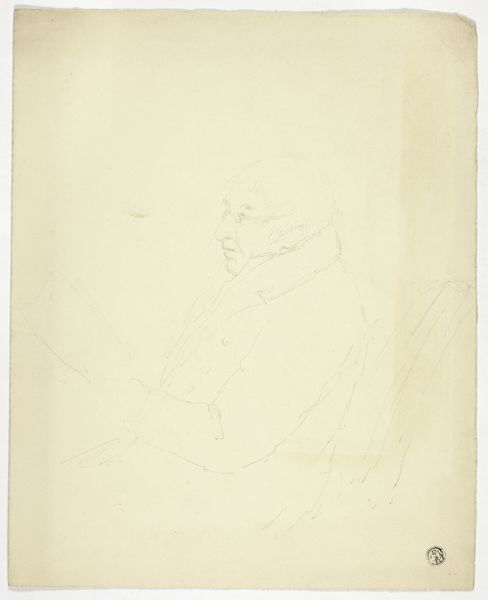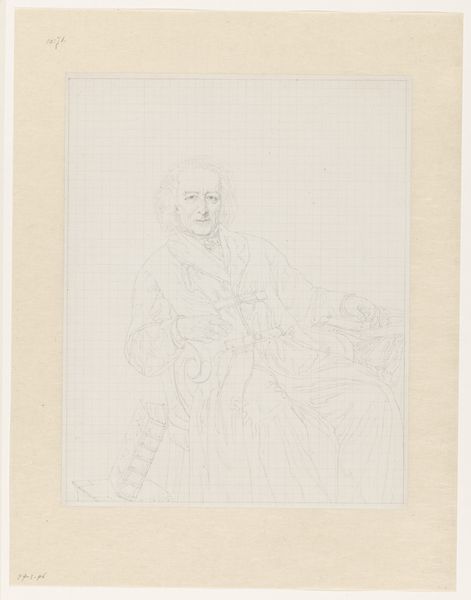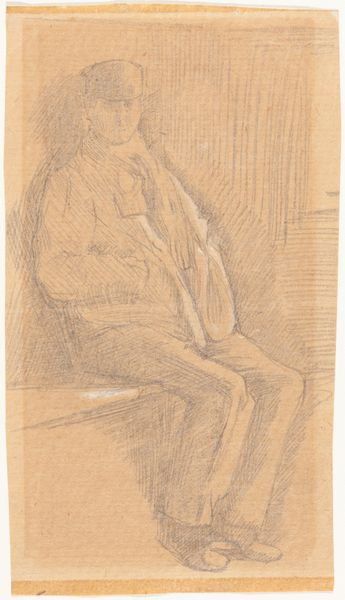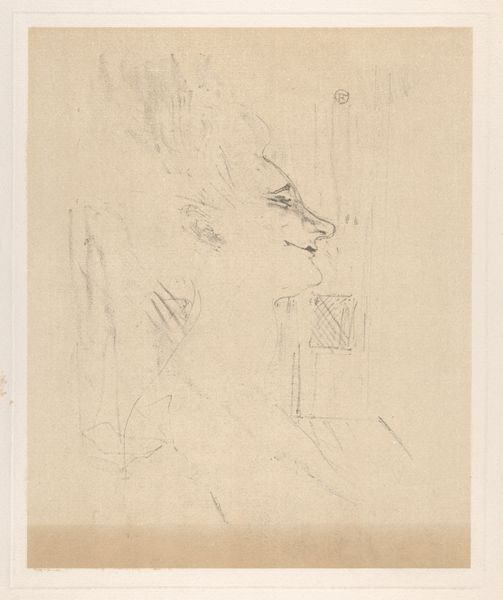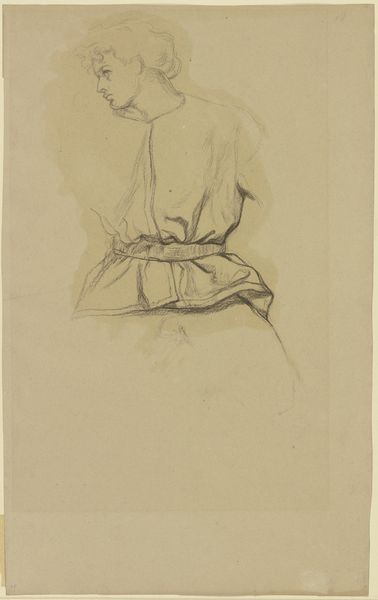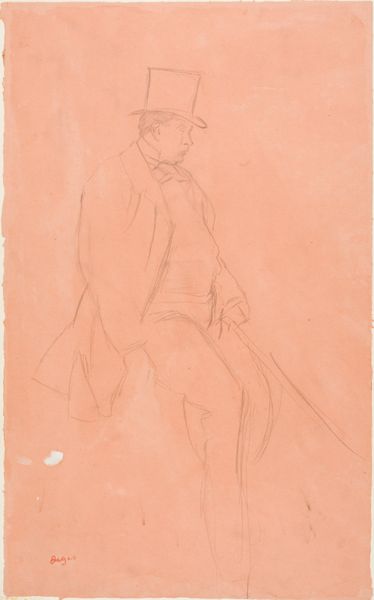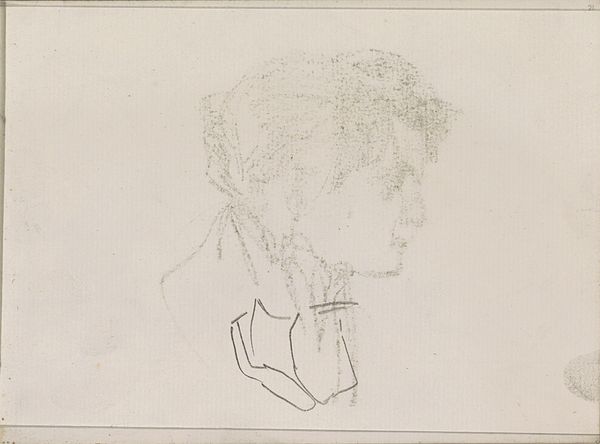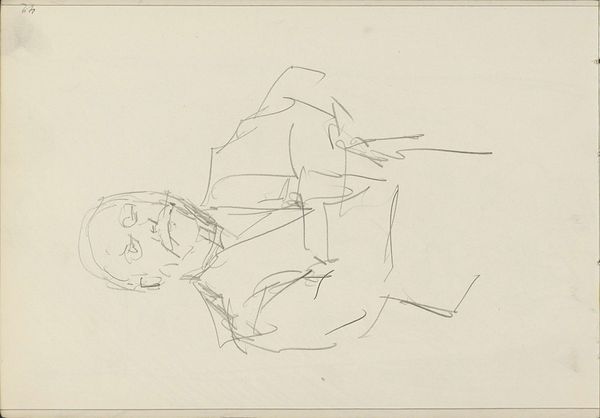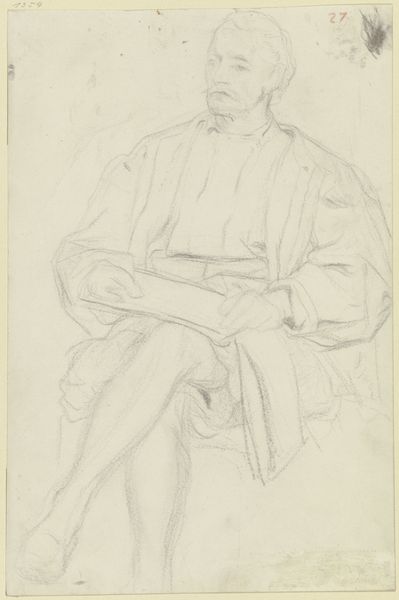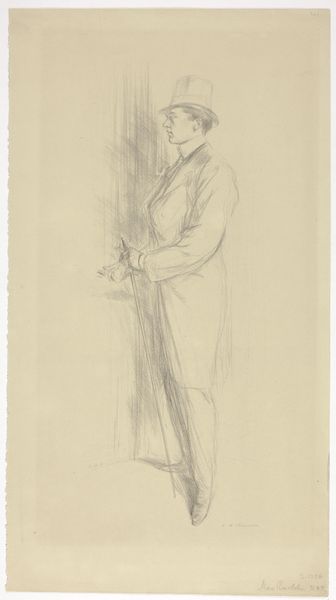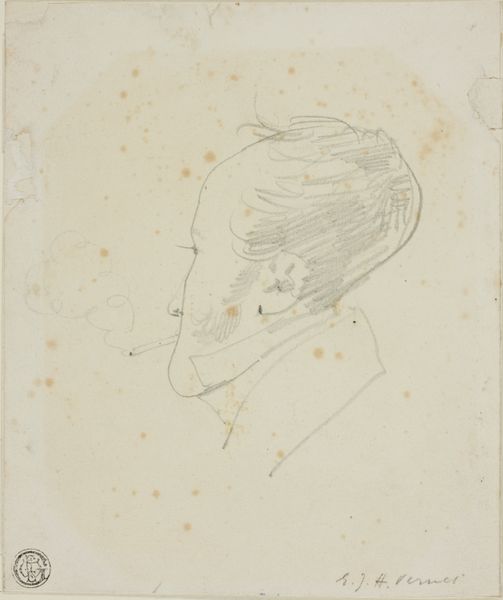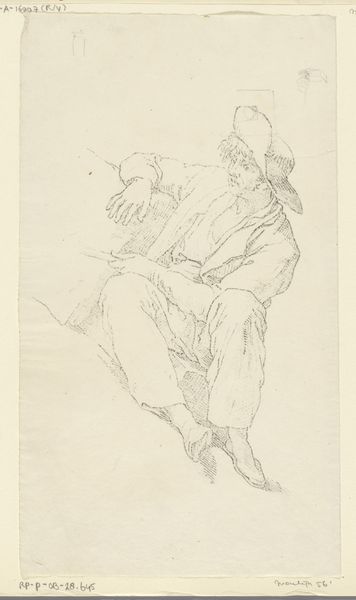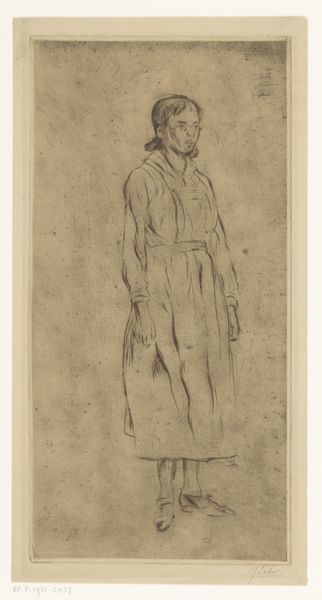
drawing, print, pencil, graphite
#
portrait
#
pencil drawn
#
drawing
# print
#
pencil sketch
#
pencil drawing
#
ink drawing experimentation
#
pencil
#
graphite
#
portrait drawing
#
academic-art
#
realism
Dimensions: Sheet (Trimmed): 9 5/8 × 7 1/8 in. (24.5 × 18.1 cm)
Copyright: Public Domain
Editor: This is Alphonse Legros’ "Study for the Portrait of Edward D. Adams," from 1892, rendered in pencil. It has an unfinished quality, almost dreamlike. The sitter's face is barely defined, while the hands are meticulously detailed. What significance might these deliberate artistic choices carry? Curator: Consider the hands, Editor. Clenched, almost prayerful. Hands often symbolize action, creation, power. What memories or ideals might this posture evoke, linking Adams to established tropes of authority or contemplation within the viewer’s understanding? Editor: So, it’s less about a literal likeness, and more about the symbolic representation of a certain type of man? Curator: Precisely. And how does this connect with the indistinct face? The obscured identity might not detract from the overall message, especially when considered with contemporary concepts of the ideal male figure, strength, intellect, integrity. How might the cultural memory of powerful men contribute to this representation? Editor: I see what you mean. Even without knowing who Edward D. Adams was, the drawing suggests respectability, perhaps even a certain solemnity. It makes me wonder what cultural ideas are at play when we depict individuals, then and now. Curator: Indeed. Artists use culturally inherited symbols to create meaning. The drawing style—academic, realistic, but not photographic—places this portrait within a certain tradition and cultural milieu, adding another layer to its symbolic weight. How might that influence interpretation? Editor: That’s really fascinating. I didn’t initially think about how much the style itself contributes to the symbolic reading. Curator: This reveals how images transmit collective memory and continuity. Through symbolic choices, Legros connects Adams not just to his time, but to a broader understanding of power and identity that transcends the individual. Editor: This has completely shifted my perspective on portraiture, thinking about it in terms of symbolic language and cultural memory. Thanks!
Comments
No comments
Be the first to comment and join the conversation on the ultimate creative platform.
